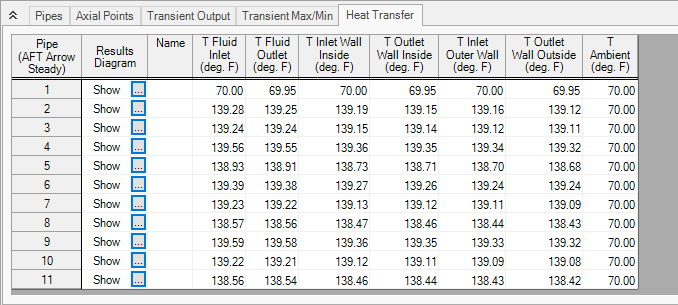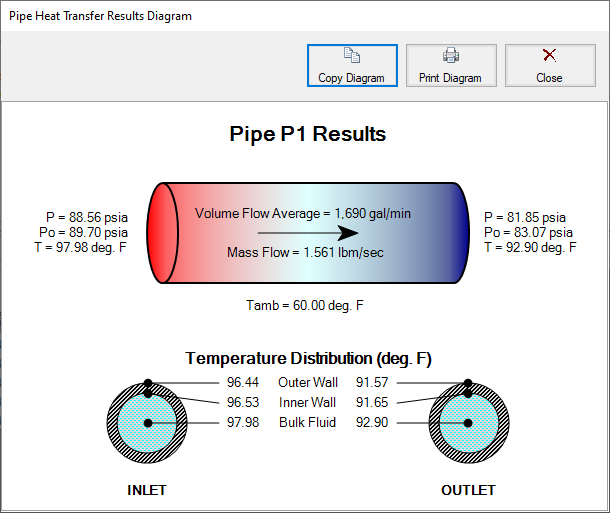Heat Transfer in Pipes Overview
Each pipe responds thermally to the environment outside of the pipe. AFT xStream offers several models that allow you to model the heat transfer characteristics of a pipe:
-
Adiabatic at Internal Surface - An adiabatic pipe is one that has perfect insulation and thus no heat transfer takes place. The temperature into the pipe is taken from the upstream junction. Insulation data can be entered but is not used for thermal purposes. This model assumes the fluid in the pipe does not thermally interact with the pipe wall.
-
Convective Heat Transfer - This model allows you to specify heat transfer data for the internal fluid, pipe wall, three layers of insulation and external convection.
-
Convective Heat Transfer and Heat Flux - This model allows you to model convective heat transfer while also specifying a constant heat flux.
-
Convective Heat Transfer with Heat Tracing - This represents adding some type of heating layer onto the pipe's outer surface. The amount of heating may be entered as a constant heat flux or by providing information on the power and number of wire turns. Insulation layers can then be added on top of the heat tracing (heat flux source).
Note that similar to flow rate definition, heat flow is positive when flowing into the pipe, and negative when flowing out.
Viewing Calculated Thermal Results in Output
A table is displayed in the Output window Pipe area showing the temperature distribution in the pipe and insulation for the steady-state system.

Figure 1: Thermal Data table in Output window Pipe area shows the steady-state temperature distribution in pipe
Clicking the button next to Show in the Results Diagram column brings up a Results Diagram for that particular pipe:

Figure 2: Pipe Heat Transfer Results Diagram



